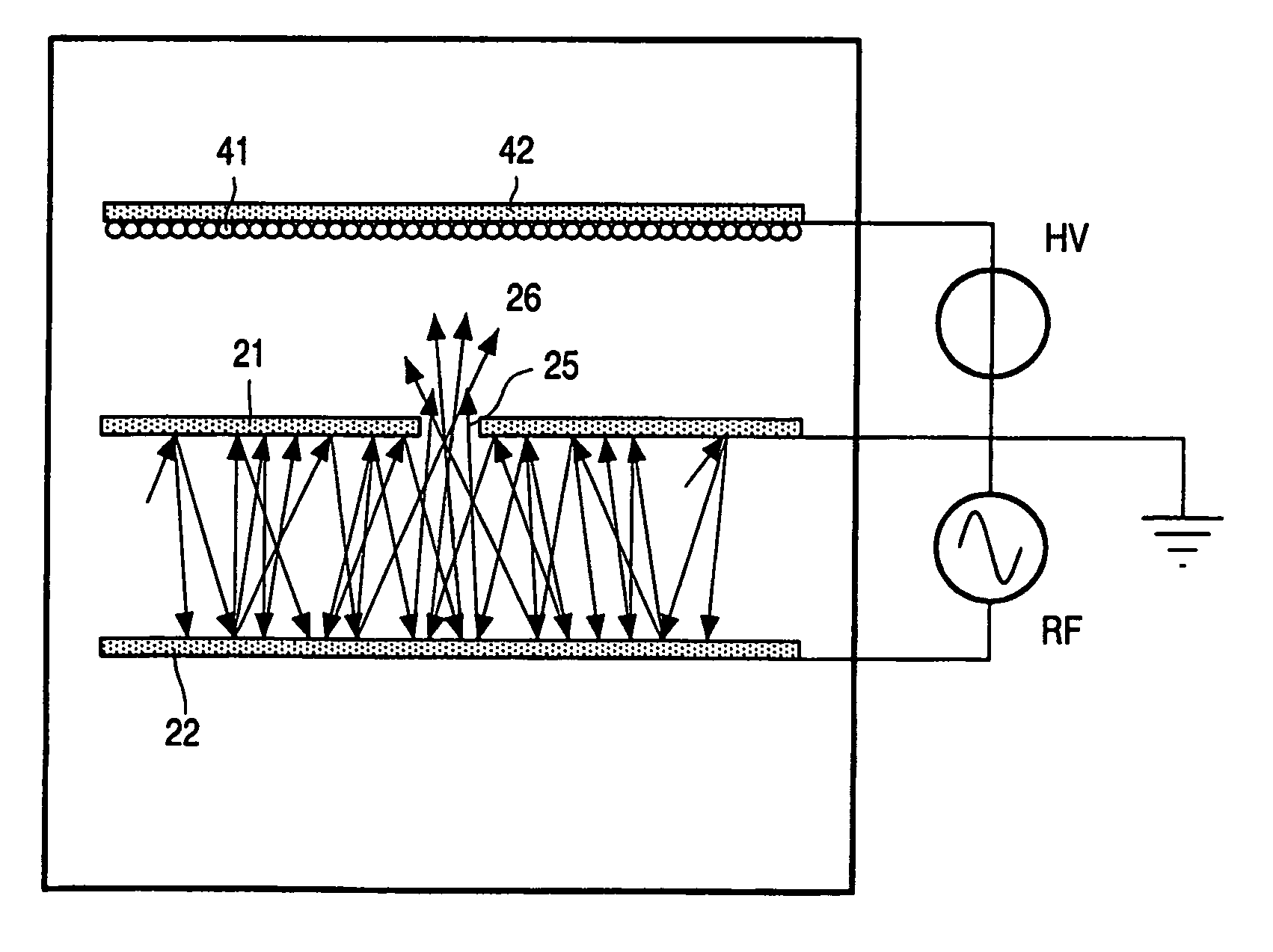Matrix display device
a display device and matrix technology, applied in the field of matrix display devices, can solve the problems of not being suitable or intended for use in matrix display devices, unable to use known electron guns, severe problems, etc., and achieve the effects of large viewing angle, large variation in the amount of electrons drawn from the cavity, and large viewing angl
- Summary
- Abstract
- Description
- Claims
- Application Information
AI Technical Summary
Benefits of technology
Problems solved by technology
Method used
Image
Examples
Embodiment Construction
[0019]FIG. 1 shows schematically a highly simplified electric equivalent of a matrix display device 1. It comprises a number of row elements 7 and column elements 6 intersecting at a matrix of intersections 10. The row elements r1 to rm can be activated by means of a row driver 4, while the column electrodes c1 to cn are provided with data via a column driver 5. To this end, incoming data 2 can be first processed, if necessary, in a processor 3. Mutual synchronization between the row driver 4 and the data column driver 5 may take place.
[0020] Signals from the row driver 4 and the column driver 5 selectively activate an intersection 10. Usually a column element 6 comprises an electrode which acquires such a voltage with respect to an electrode of a row element 7 that the intersection is activated and thereby a pixel on a display screen associated with the relevant intersection is activated (or deactivated, but in any way a visible effect is generated in the pixel). This Figure shows...
PUM
 Login to View More
Login to View More Abstract
Description
Claims
Application Information
 Login to View More
Login to View More - R&D
- Intellectual Property
- Life Sciences
- Materials
- Tech Scout
- Unparalleled Data Quality
- Higher Quality Content
- 60% Fewer Hallucinations
Browse by: Latest US Patents, China's latest patents, Technical Efficacy Thesaurus, Application Domain, Technology Topic, Popular Technical Reports.
© 2025 PatSnap. All rights reserved.Legal|Privacy policy|Modern Slavery Act Transparency Statement|Sitemap|About US| Contact US: help@patsnap.com



